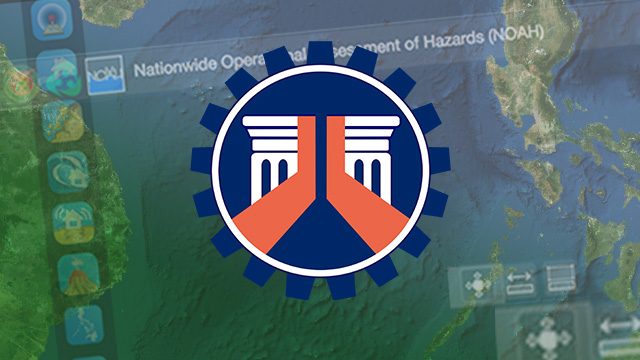SUMMARY
This is AI generated summarization, which may have errors. For context, always refer to the full article.

MANILA, Philippines– As part of the guidelines of the Department of Public Works and Highways (DPWH), maps from the UP National Operational Assessment of Hazards (Project Noah) will be used as reference for acquiring permits and certifications for projects.
All district engineers and construction division chiefs were ordered to make a list of no-build zones and submit this to the DPWH Central Office on December 10.
The DPWH memorandum dated December 6 also said only projects which have complied with DPWH orders and national laws will be certified.
No-build zones are areas where building of infrastructure, except critical facilities, should not be permitted because of their exposure to landslides, flooding, storm surges or other natural hazards. These are defined by the Water Code, Civil Code, Revised Forestry Code of the Philippines.
Guidelines to DPWH’s required permits and certificates in building within potentially high-hazard areas now include using Project Noah maps as reference for hazards such as floods, rainfall-triggered landslides, and storm surges.
Established in 2012, Project Noah was the government’s flagship disaster management initiative under the Department of Science and Technology. It was discontinued in March 2017 due to “lack of funds” until UP adopted the program. Through its website and social media accounts, Project Noah provides high-resolution flood, landslide and storm surge hazard maps. (READ: How does Project NOAH contribute to PH’s disaster management?)
Meanwhile, the Mines and Geosciences Bureau (MGB) will certify the suitability for construction of property.
For earthquake and volcanic hazards, Phivolcs certification is necessary, with the consultation of its hazard maps. (READ:12-point checklist for an earthquake-resistant house)
“It is imperative for all planning and implementing offices of this Department to consult with the most updated Comprehensive Land Use Plans of concerned Local Government Units, with particular focus on the hydro-meteorological hazard maps and other human vulnerabilities,” DPWH said in its memorandum.
As the engineering and infrastructure arm of the government, this is one of the DPWH’s effort to mainstream disaster risk reduction and climate change in its infrastructure planning. – Rappler.com
Add a comment
How does this make you feel?
There are no comments yet. Add your comment to start the conversation.